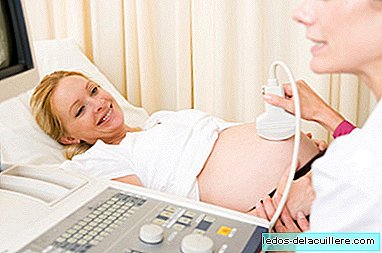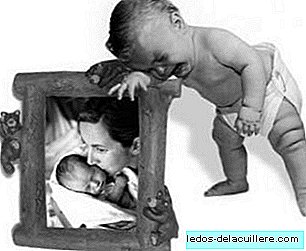
We have seen that babies at risk for their development are those who, due to a certain number of factors or circumstances, have a greater number of possibilities of presenting some type of deficiency or alteration in their ability to communicate, motor, sensory, cognitive, affective, behavioral or a mixture of them.
Among the most important risk factors, there are three key periods: the prenatal, perinatal and postnatal periods. Today we are going to focus on those prenatal risk factors, that is, those that can be from conception to the moment of delivery.
It should be noted that there are factors that can be found in the three stages, so those children in which the biological and environmental factors are combined are those who are at the highest risk of having evolutionary problems compared to those who have only one type of factors.
Most of the risk factors that we are in the prenatal stage have to do with the health and customs of the mother, being the environment of the child in the uterus critical for its development. This is the reason why the age of the mother, her general state of health and nutrition, and the adequacy of her prenatal care, are maternal factors that can potentially become important risks.
Some health problems often increase the risk of certain effects at birth (for example, diabetes) or increase the likelihood of an advance in birth (for example, sexually transmitted diseases). Similarly, the consumption of tobacco, alcohol and other drugs are harmful to the development of the fetus. Finally, maternal infections, such as HIV or hepatitis B, can be transmitted to the fetus, leading to significant health problems.
Prenatal Risk Factors
- Mother's age: Those women over 36 and under 16 are more likely to have a child with some type of medical problem. Specifically, the most common is a lower weight in the baby, and especially teenage girls.
- Prenatal care: occurs in certain situations that there are women who, either due to ignorance or personal opinion, do not use prenatal health care services. This lack of prenatal care may cause a greater risk of rupture of the amniotic membranes early, resulting in a premature and low birth weight baby.
- Mother's health problems: There are a number of diseases of the mother that greatly increase the risk that the baby, at birth, has some kind of problem. The most prominent are epilepsy, diabetes or HIV.
- Health and nutrition of the mother: Both aspects have considerable effects on the baby's health (for example, a diet high in fat and low in protein can cause cardiovascular disease in the baby). An important vitamin that the mother must add in her diet as a nutritional supplement, mainly during the first trimester of pregnancy, is folic acid, since it can reduce the incidence of a type of defect such as spina bifida.
- Use of tobacco, alcohol or other drugs during pregnancy: tobacco is the most important risk factor for the baby to have low birth weight, and although it is not associated with significant malformations of the fetus, there is a relationship between the consumption of tobacco by pregnant mothers and an increase in number of abortions and perinatal mortality, in addition to alterations of growth, cognitive capacity and lung development of the baby. On the other hand, excessive alcohol consumption during pregnancy can lead to the so-called fetal Alcohol Syndrome, which is characterized by a series of alterations in the baby such as low birth weight, heart defects or microcephaly, among others. Finally, the use of drugs (such as cocaine and methamphetamine) by pregnant women, is also associated with problems in the development of the baby, such as low birth weight or a smaller cranial perimeter and baby size. It may happen that certain neurological or urogenital anomalies also occur, as well as at the level of behavior.
- Infections: the five most common congenital infections are: toxoplasmosis, rubella, cytomegalovirus, herpes and syphilis.
As you can see, there are many prenatal risk factors> to be taken into account for the optimal development of the fetus during pregnancy. Soon we will talk about the risk factors for the baby at the time of delivery and after it.












